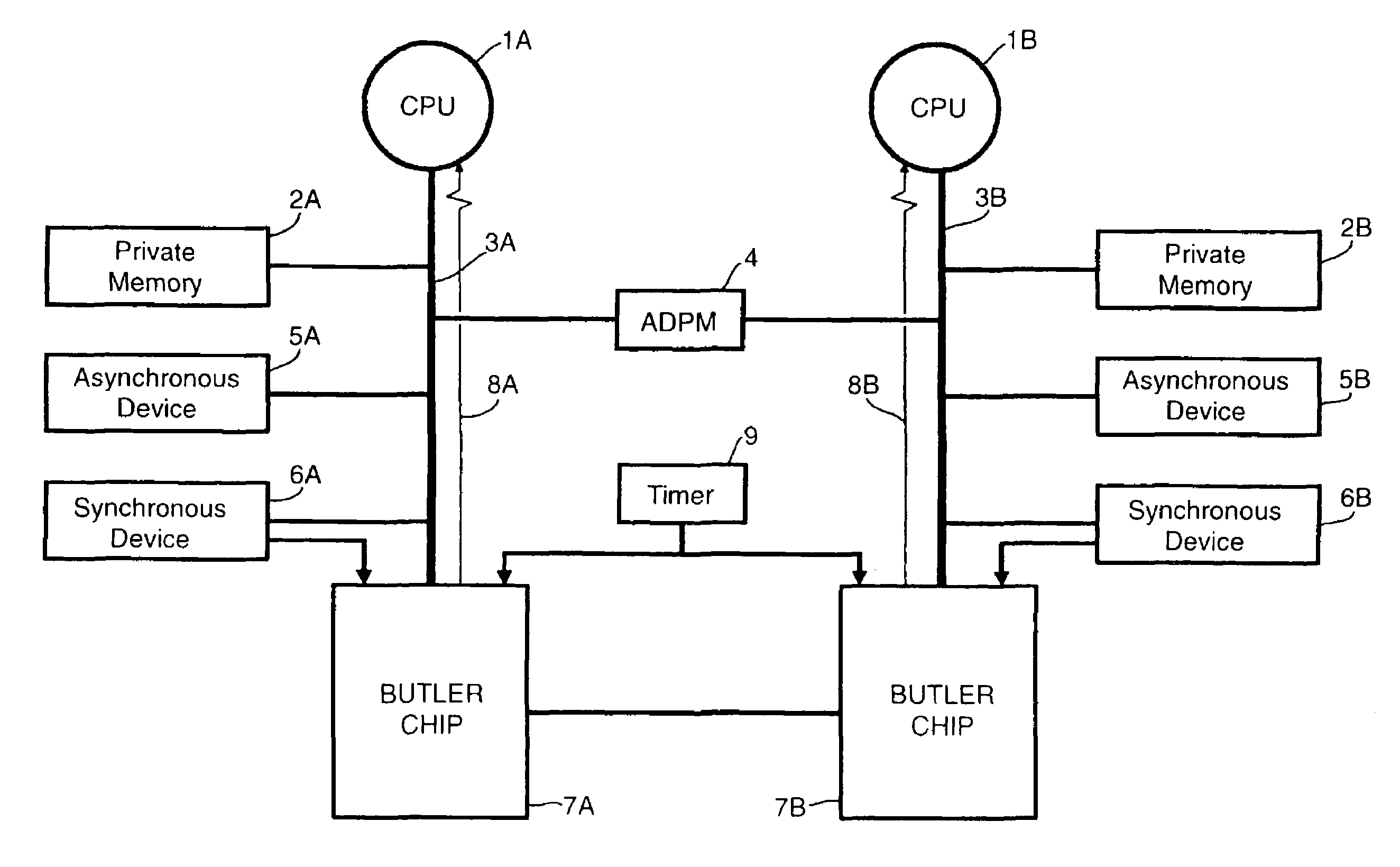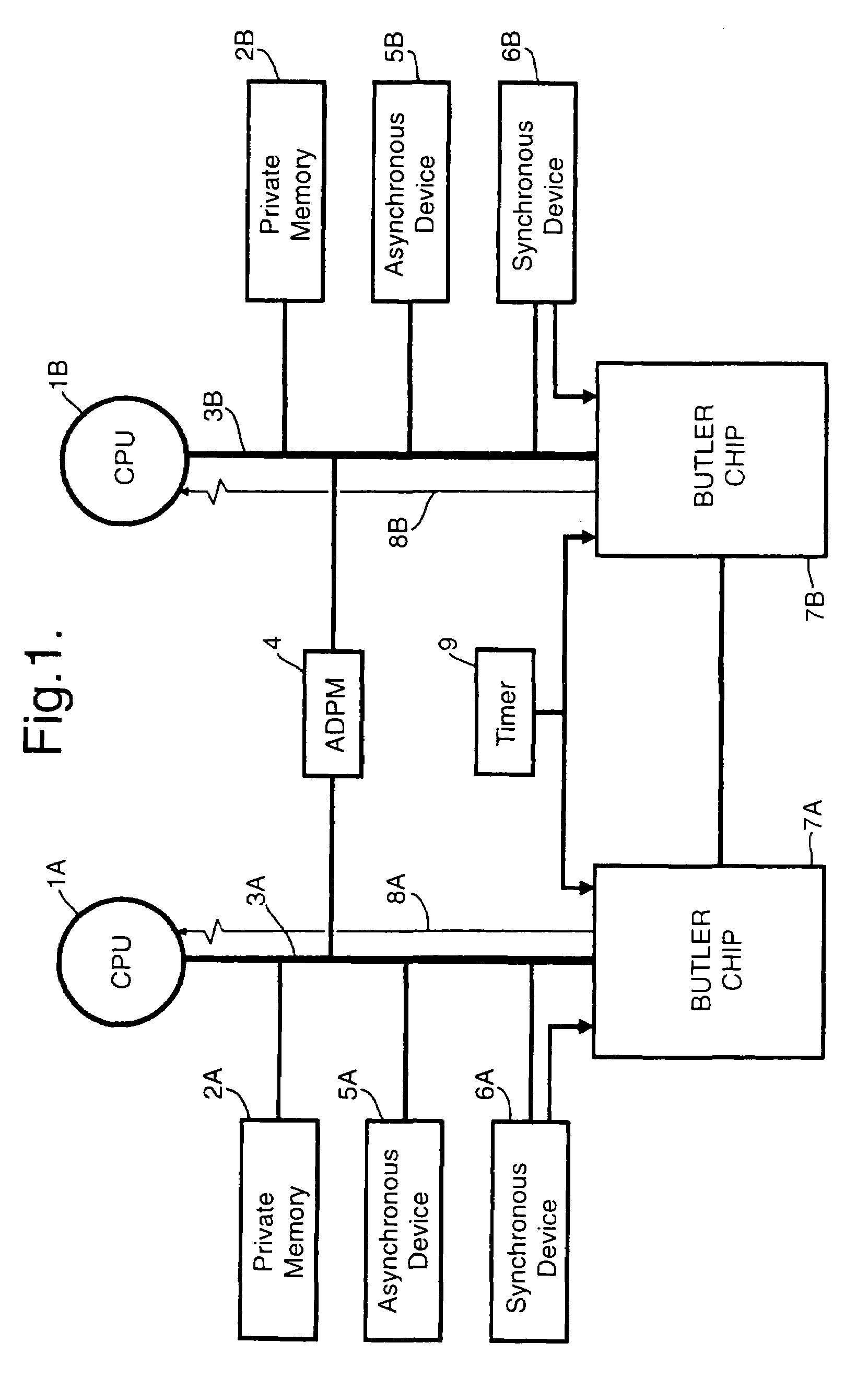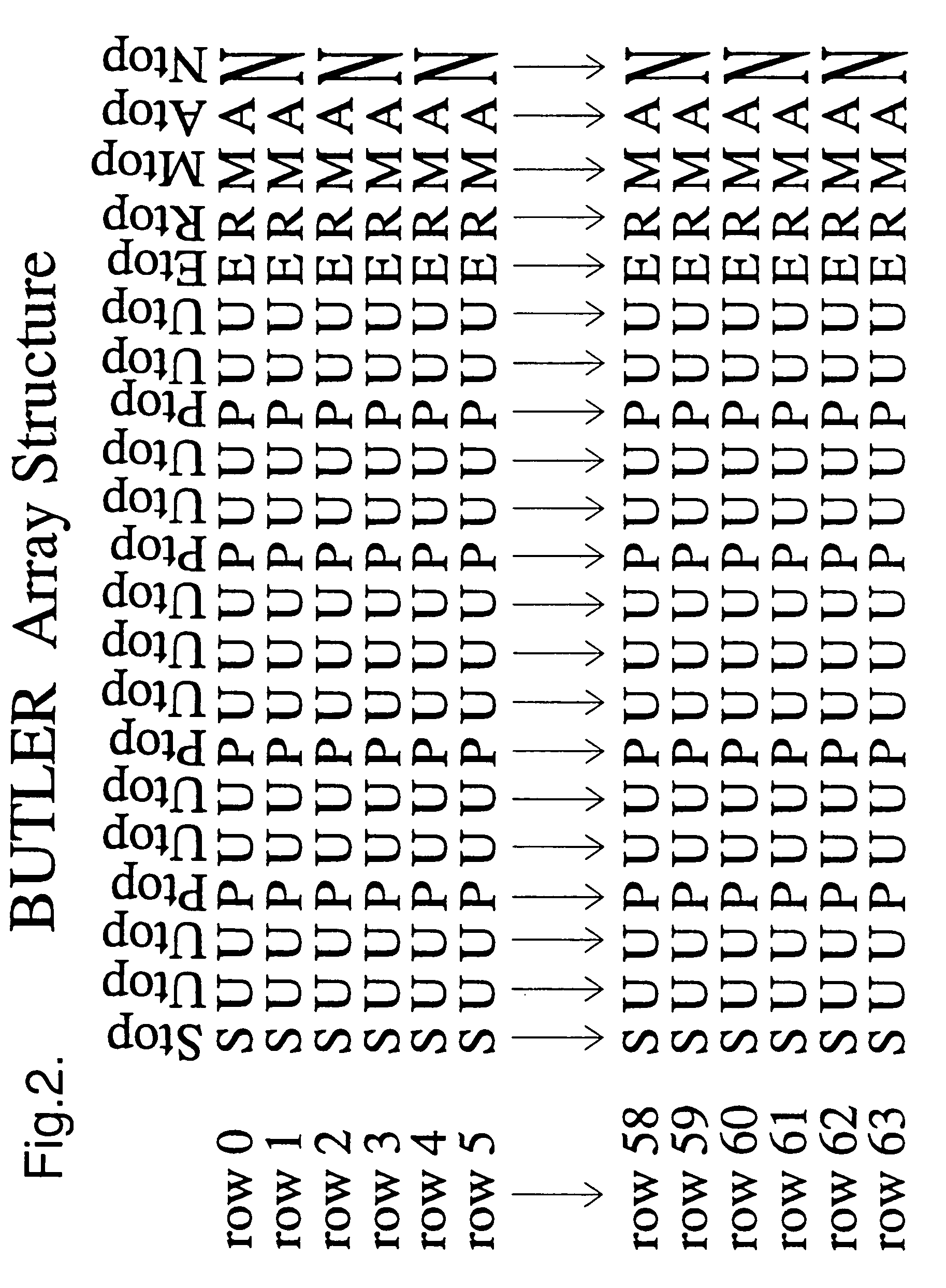Integrated circuits for multi-tasking support in single or multiple processor networks
a multi-tasking, integrated circuit technology, applied in the direction of program control, program initiation/switch, architecture with multiple processing units, etc., can solve problems such as temporal indeterminacy
- Summary
- Abstract
- Description
- Claims
- Application Information
AI Technical Summary
Benefits of technology
Problems solved by technology
Method used
Image
Examples
Embodiment Construction
[0034]In FIG. 1 a dual processor system comprises two central processing units (CPU) 1A, 1B, each CPU being linked to a private memory 2A, 2B via a data bus 3A, 3B. The CPU's 1A, 1B are linked to each other by means of an asynchronous dual port memory (ADPM) 4. Each CPU 1A, 1B also has access to asynchronous devices (peripherals) 5A, 5B, synchronous devices (ie peripherals which can generate an external stimulus) 6A, 6B and an associated “Butler chip”7A, 7B respectively. The “Butler chips”7A, 7B are connected with one another.
[0035]An interrupt line 8A, 8B, runs from each “Butler chip”7A, 7B to its associated CPU 1A, 1B. This can be used to trigger task switching when using pre-emptive scheduling or to indicate a watch-dog timer overrun when using co-operative scheduling.
[0036]Each “Butler chip” may be provided with a standard memory interface for connection to its associated processor. Conveniently, this could comprise a 16-bit bi-directional data bus, three address lines and three...
PUM
 Login to View More
Login to View More Abstract
Description
Claims
Application Information
 Login to View More
Login to View More - R&D
- Intellectual Property
- Life Sciences
- Materials
- Tech Scout
- Unparalleled Data Quality
- Higher Quality Content
- 60% Fewer Hallucinations
Browse by: Latest US Patents, China's latest patents, Technical Efficacy Thesaurus, Application Domain, Technology Topic, Popular Technical Reports.
© 2025 PatSnap. All rights reserved.Legal|Privacy policy|Modern Slavery Act Transparency Statement|Sitemap|About US| Contact US: help@patsnap.com



